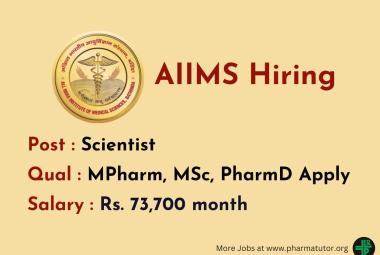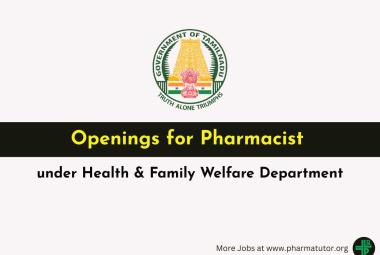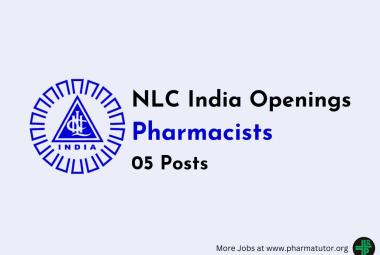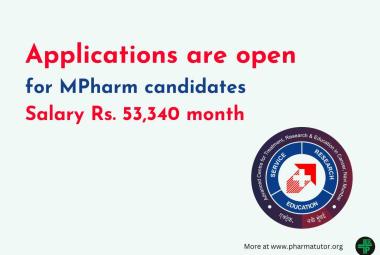{ DOWNLOAD AS PDF }
ABOUT AUTHORS
SRI HARSHA AYYAGARI.*HARI PRIYA MULLAMURI, SOWMYA BYREDDY, DURGA PRASAD T. S.
Sri Padmavathi School of pharmacy, Jawaharlal Nehru Technological University, Anantapuram, Andhra Pradesh, India.
ABSTRACT
Glanzmann's Thrombasthenia (GT) is a rare, autosomal recessive bleeding disorder characterized by prolonged bleeding time and impairment in aggregation of platelets and impairment in clot retraction. The physiological defect includes impairment of glycoprotein receptor’s (GPIIb/IIIa complex) present on platelet membrane which mediates platelet aggregation through fibrinogen binding. Purpose of this study is to get all of us know about this rare condition. A 16-year old female patient presented with repeated episodes of menstrual bleeding since 4years. She was a k/c/o Glanzmann's thrombasthenia. She was treated with antifibrinolytics, IV fluids and then discharged. Early diagnosis and proper supportive care are the measures for prognosis of Glanzmann’s thrombasthenia.
Reference Id: PHARMATUTOR-ART-2653
|
PharmaTutor (Print-ISSN: 2394 - 6679; e-ISSN: 2347 - 7881) Volume 7, Issue 03 Received On: 14/02/2019; Accepted On: 20/02/2019; Published On: 01/03/2019 How to cite this article: Harsha, A., Mullamuri, H.P., Reddy, S. and S, D.P. 2019. Glanzmann’s Thrombasthenia: A Rare Bleeding Disorder. PharmaTutor. 7, 3 (Mar. 2019), 38-40. DOI:https://doi.org/10.29161/PT.v7.i3.2019.38 |
INTRODUCTION:
Glanzmann's Thrombasthenia (GT) is a rare, genetic, bleeding disorder characterized by prolonged bleeding time, impairment in aggregation of platelets and impairment in clot retraction (Vijayalakshmi Venkat, 2018).
It is rarely seen, but GT is more commonly observed in communities where consanguineous marriages are more frequent (Vijayalakshmi Venkat, 2018). The physiological defect includes impairment of glycoprotein receptor’s (GPIIb/IIIa complex) present on platelet membrane which mediates platelet aggregation through fibrinogen binding.
Bruising, epistaxis, gingival hemorrhage, and menorrhagia are the common manifestations (Jhansi KP, 2009). Patients shows elevation in bleeding time and a normal platelet count with abnormal platelet function and morphology ( Christopher Sebastiano, 2010).
By providing proper supportive care and by platelet transfusions we will manage the symptoms like bleeding and other manifestations, so by this definitely we will observe a very good prognosis (Christopher Sebastiano, 2010).
Case report:
A 16-year-old female patient admitted in General medicine ward of Sri Venkateswara Ram Narayan Ruia Government Genaral Hospital(SVRRGGH), Tirupati presented with repeated episodes of menstrual bleeding since 4 years. She had a history of prolonged bleeding on minor trauma, shortness of breathing, palpitations occasionally.
She was a k/c/o Glanzmann's thrombasthenia. She was given blood transfusion many times in the past. She was born out of a consanguineous marriage. On examination, she had pallor. Vital signs were stable. Cardiovascular and other system examination were unremarkable.
Lab Investigations: it shows lab values of a patient with compared to Normal value.

Table.1 shows lab values of this patient (R.Alagappan, 2014)
Lab test:
Peripheral smear: It concludes microcytic hypochromic RBCs, white blood cell count is normal, no immature cells seen, platelets count is adequate, and normal in size and morphology.
Hence the patient was found to have menstrual bleeding with a normal platelet count. Then patient was treated with following treatment.
Treatment given in this patient:
1. 1 bottle platelet transfusion was done on 2nd day of therapy
2. Tab. PANTOP 40mg OD
3. Tab. IFA(IRON+FOLICACID) 100mg+1.5mg OD
4. Tab. vit-c 500mg OD
5. Tab B-complex OD
6. Tab. Calciumcarbonate +Vit D3 (500mg+250ug) OD
7. Inj. Tranexamic acid 500mg IV SOS
8. Inj Optineuron 1amp in 100ml NS IV OD
DISCUSSION:
GT shares clinical and laboratory findings with other more common acquired bleeding disorders. GT should be considered as a differential factor in patients with a history of severe bleeding following minor trauma or unprovoked bleeding. In this case the family history of consanguineous marriage plays a key role in diagnosing GT (Indu Varkey, 2014).
The common features of GT are bruising, epistaxis, gingival haemorrhage, menorrhagia. (Ahmed Al Wahab, 2017) Typical laboratory tests of patients with Glanzmann’s thrombasthenia show prolonged bleeding time, decreased or absent clot retraction and abnormal platelet aggregation responses to physiologic stimuli, all of these parameters were observed in this patient (Ahmed Al Wahab, 2017) .
Causes of GT include anaemia, acute lymphocytic leukaemia, HTN, vitamin deficiencies (Raghavendra H Gobbur, 2014). In the present case, the patient’s medical history revealed that she was a known case of Glanzmann’s thrombasthenia at 13years of age.
Patients with severe bleeding episodes must continue to receive platelet transfusions for 48 hours after bleeding and until wound healing has occurred in patients undergoing surgery.
CONCLUSION:
A 16 year old female patient was admitted with history of recurrent menstrual blood loss and delayed wound healing and then patient was treated with appropriate treatment. As it was very rare and untreatable condition patient’s must aware of it and take proper precautions to avoid any trauma or accidents and follow physician’s advice regurarly and monitor platelets levels frequently, so by this we can control episodes of bleeding. Hope in future advancements in genetical engineering may provide cure for this condition.
REFERENCES:
1. Ahmed Al Wahab., Alaa Nugud M.D., Shomous Nugud M.D. and Zahran Alras(2017); Unexplained Bleeding: Case Report of Glanzmann’s Thrombasthenia; Medical Student Research Journal.
2. Christopher Sebastiano., Michael Bromberg., Karen Breen. and Matthew T Hurford(2010); Glanzmann's thrombasthenia; Report of a case and review of the literature. International Journal of Clinical and Experimental Pathology; 3(4); 443–447.
3. Indu Varkey., Kavita Rai., Amitha M. Hegde. and Mangalpady Shenoy Vijaya(2014); Clinical management of Glanzmann’s Thrombasthenia: A Case Report; Journal of Dentistry; 11(2);242-247.
4. Jhansi KP., Varghese P. and Anand Asha(2009); A case of Glanzmann’s thrombasthenia type I in a primigravida treated with factor VIIa; The Journal of Obstetrics and Gynecology of India, 59(6); 576-577.
5. Raghavendra H Gobbur. and Issac Varghese(2014); A rare case of Glanzmann’s Thrombasthenia; International Journal of Medical Science and Public; 3(8); 1027-1028.
6. R.Alagappan(2014); Manual of Practical Medicine; 5th Edition, New Delhi, Jaypee (P) Ltd; pg.no: 989-990.
7. Vijayalakshmi Venkat., Sruti Kalluri., Satheesha Reddy. and Bandalore Hanumantha(2018); Glanzmann's thrombasthenia: A rare case report of spontaneous gingival bleeding; Journal of Indian Academy of Oral Medicine and Radiology; 30(1); 88-91.
NOW YOU CAN ALSO PUBLISH YOUR ARTICLE ONLINE.
SUBMIT YOUR ARTICLE/PROJECT AT editor-in-chief@pharmatutor.org
Subscribe to Pharmatutor Alerts by Email
FIND OUT MORE ARTICLES AT OUR DATABASE









